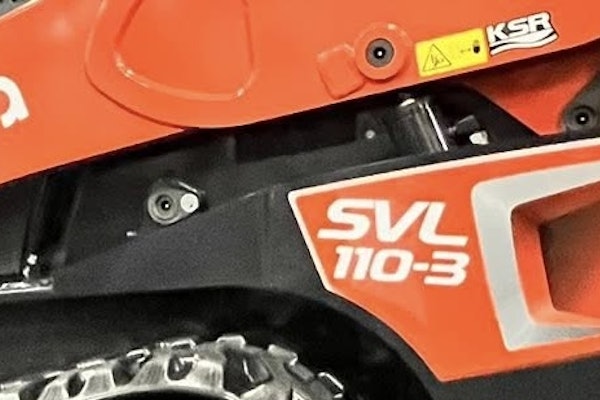Quick couplers are like the perfect employee. Reliable. Able to work long hours with minimum maintenance. And like the perfect employee, quick couplers are often taken for granted. Big mistake. While your quick couplers may never get frustrated, quit or go to work for your competition, they can stop delivering the performance you’ve come to expect if they don’t receive at least minimal care and attention on occasion.
Most quick couplers have two main systems, the hard, metallic components that make the physical connection between the machine and its attachment and the hydraulic couplings that provide power to the attachment. Joel Powell, product specialist group manager of compact equipment at Volvo Construction Equipment, says the entire assembly is simple and straightforward, and visual inspection is all that’s usually necessary to ensure proper operation.
“Periodically inspect the hoses to make sure they aren’t dry rotted or leaking. Check the hose wrap for cuts,” Powell suggests. “When changing attachments, a visual inspection is usually enough to make sure the pins are in place. You should have the same amount of pin coming through both holes. Frozen mud, snow and ice can sometimes block the holes and keep one of the pins from engaging fully.”
With hydraulic quick couplers that can be operated from the cab, this step is often overlooked. For safety’s sake, the operator should get out of the cab and do a visual inspection to make sure the pins are properly engaged anytime connection is made to an attachment. The big risk with improperly engaged pins is that the connected attachment will fall from the equipment, resulting in property damage, injury or death.
As a result, several state and federal occupational safety and health agencies have extensive safety rules for quick connectors. Failure to follow these rules can increase the likelihood of an accident and will certainly increase the likelihood of a lawsuit if an accident occurs. There’s also the risk of fines, jail time or other penalties if you fail to follow the rules.
Dave Kweram, Caterpillar Work Tool Marketing sales support consultant, says coupler maintenance typically involves three steps. “First, if your monthly inspection reveals any moving parts that are worn out, replace them. Second, grease the quick coupler if appropriate. That is, if there’s a zerk fitting. And third, keep the coupler clean.”
Powell agrees that cleanliness is important. Fortunately, he says most newer hydraulic attachments use an O-ring face seal design which does a much better job of keeping dirt out of the hydraulic system than did the old poppet-style connectors. Even so, he recommends connecting the terminated ends of the attachment’s hydraulic hoses to keep out dirt when swapping or storing attachments.
If a piece of equipment doesn’t have a quick coupler, one can be easily added. “By and large most skid steer attachments use the same design,” says Powell. “It’s a universal design that’s been around for years. That’s not true with other equipment, such as tool carriers, where you have more variation in dimensions, hydraulic requirements, visibility concerns and lift capacities.”
While adding a quick coupler increases convenience, Powell points out that it can have a negative impact on other factors. “When adding a bracket or coupler, think about the effect on visibility. Remember, too, that your breakout force will be reduced because the effective length of the machine linkage is increased. Lift capacity will be reduced, too, since the quick coupler itself may weigh up to 400 pounds. Understandably, this is a bigger issue with smaller machines, such as mini excavators; but regardless of the size of the equipment, the effect on breakout force must be considered.”
Quick couplers are simple and rugged, but that’s no reason to ignore them. Give your quick couplers the attention they deserve and they’ll be happy and productive for years, just like that perfect employee.
Did you know? State and Federal Common Quick Coupler Safety Requirements:
- You have to comply with the manufacturer’s specifications and limitations for coupler operation.
- You have to perform regular, periodic inspections and maintain the equipment as required.
- You must provide training for those charged with doing inspections and maintenance on the coupler and its related systems.
- Any problems that may affect the safe operation of the equipment must be corrected before the machine is put into use.
- Operator’s manuals and similar documentation must be available at the work site.
- If you sell a piece of equipment that has quick connectors, make sure you include any documentation that applies to those connectors with the sale of the machine.
- If you buy a used piece of equipment that has quick couplers, make sure you get the documentation with it. You should also check with the manufacturer to see if any pertinent Technical Service Bulletins have been issued.






